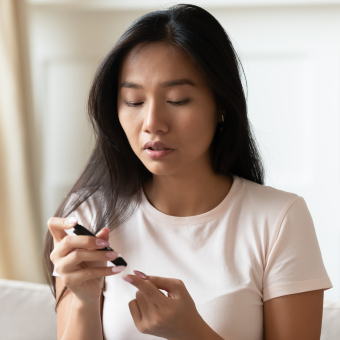 KETOACIDOSIS IN RELATION TO DIABETES
KETOACIDOSIS IN RELATION TO DIABETES
Diabetic ketoacidosis (DKA) is when a person with diabetes type 1 has chemicals called ketones that build up in the blood. In normal circumstances, the cells in the body take in and use sugar (glucose) as a source of energy. Glucose moves through the body in the blood. Insulin is a hormone that helps your cells take in the glucose from the blood. A person with diabetes cannot take in and use glucose in a normal way therefore glucose then builds up in the blood and it does not get to the cells. As a result body’s cells will burn fat instead of glucose for energy.
When cells burn fat, they make ketones. High levels of ketones can poison the body. High levels of glucose can also build up in the blood and cause other symptoms.
DKA is pretty common but is more common in younger people and more women are found to have DKA than men.
SPA MANAGEMENT:
What is the cause of ketoacidosis in your client?
DKA happens mainly from not having enough insulin.
 Determine any medications; contraindications and cautions before proceeding with any spa treatment.
Determine any medications; contraindications and cautions before proceeding with any spa treatment.
Treatments that can be offered:
- The client with diabetes can encounter many different skin related issues–for the purposes of this blog we are focusing on DKA and dry skin, the latter caused from high blood sugar (glucose). Dry, itchy skin can also result from poor circulation or a skin infection.
- Hydrating, moisturizing face and body services are helpful.
- The diabetic client with DKA can feel very thirsty and will need to drink sugar-free, caffeine-free liquids; they could have a fruity smelling breath (can smell like acetone) so offer lemon (fresh) water, or offer the client fennel seeds to chew on when they are sitting/standing upright.
Estheticians: be aware clients with diabetes are more prone to:
- Bacterial infections, the most common being Staphylococcus bacteria.
- Styes (infections of the glands of the eyelid), boils, folliculitis, infections around the nails.
- Fungal infections in warm, moist folds of the skin
- Common fungal infections include jock itch, athlete's foot, ringworm (a ring-shaped itchy patch), and vaginal infection that causes itching.
- Itching in localized area cause by a yeast infection, dry skin or poor circulation.
DISCLAIMER: Work within the scope of your license/certification.
 About the Author
About the Author
Mórag Currin is a highly sought-after esthetic educator with more than 27 years of spa industry experience and more than twelve years of training and training management experience. She travels around the globe with her training and expertise, helping to raise the bar in the spa industry and to open the door to all people, regardless of skin type or health condition. To learn more about this topic and many other skin challenges, diseases, and symptoms, check out Mórag’s book, Health Challenged Skin: The Estheticians’ Desk Reference.

ASCP Member Discount
ASCP Members receive 30% off Health Challenged Skin: The Estheticians’ Desk Reference. Click the link here to access your exclusive discount!
Frequently Asked Questions:
- What is diabetic ketoacidosis? Diabetic ketoacidosis (DKA) is when a person with type 1 diabetes has chemicals called ketones that build up in the blood.
- How long does it take to recover from diabetic ketoacidosis? Most people recover within 24 hours. If left untreated, diabetic ketoacidosis can cause severe illness.
- What causes ketoacidosis? Diabetic ketoacidosis happens mainly from not having enough insulin. Insulin is a hormone that helps your cells take in the glucose from the blood. A person with diabetes cannot take in and use glucose in a normal way therefore glucose then builds up in the blood and it does not get to the cells. As a result, the body’s cells will burn fat instead of glucose for energy. When cells burn fat, they make ketones. High levels of ketones can poison the body.
- What are the symptoms of ketoacidosis? Symptoms of diabetic ketoacidosis include fast breathing, dry skin and mouth, flushed face, headache, muscle stiffness, and lethargy, to name a few.
- How do you treat diabetic ketoacidosis? If you’re curious how to treat diabetic ketoacidosis, know that physicians will provide treatment for your clients. Diabetic ketoacidosis is treated with insulin. You should refer your clients to their medical professional.
- Log in to post comments

 KETOACIDOSIS IN RELATION TO DIABETES
KETOACIDOSIS IN RELATION TO DIABETES Determine any medications; contraindications and cautions before proceeding with any spa treatment.
Determine any medications; contraindications and cautions before proceeding with any spa treatment. About the Author
About the Author